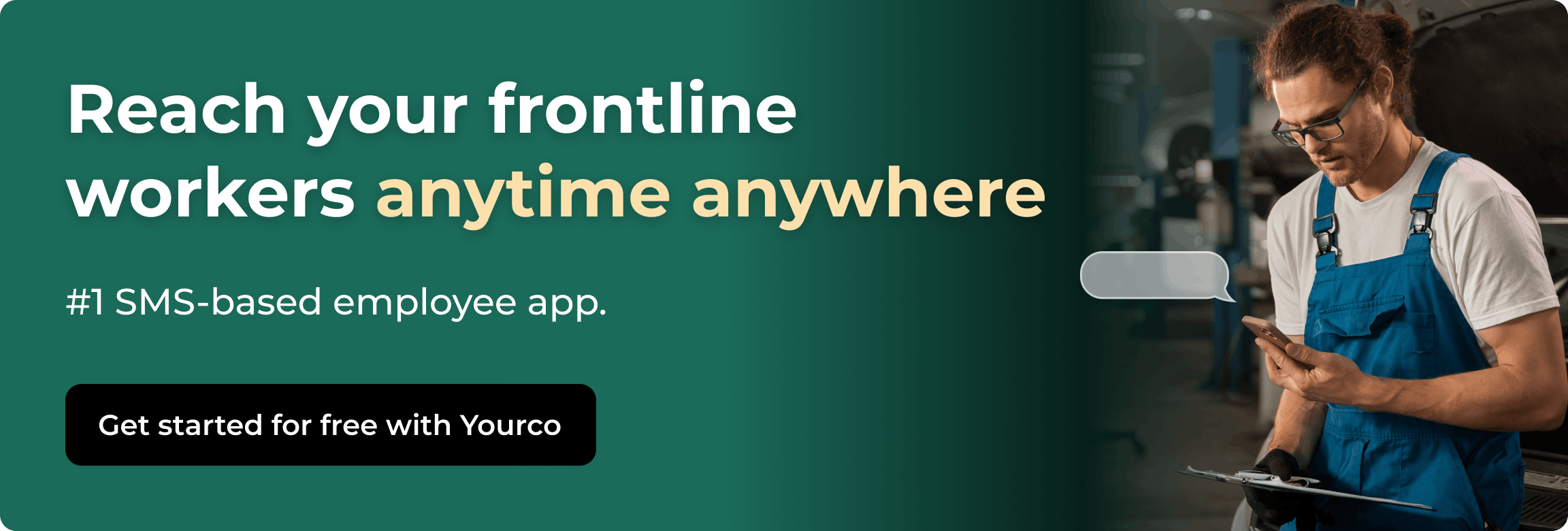What Attendance Tracking Dashboard Works For Multiple Locations?


Managing attendance across multiple locations gets complicated fast. Each site runs on its own schedules, its own staffing needs, and its own local rules, making it hard to keep everything accurate and up to date. When time data lives in different systems or arrives at different times, even small issues can lead to payroll mistakes, coverage gaps, or compliance problems.
This article walks through what an effective multi-location attendance dashboard should include, how unified data improves day-to-day operations, and which features help managers respond quickly when something changes. By the end, you’ll know exactly what to look for in a dashboard that supports every site, every shift, and every team without adding extra work to your plate.
Why Centralized Attendance Tracking Matters When Your Scheduling Is Decentralized
Most large organizations don’t run scheduling from one place. Stores, warehouses, clinics, restaurants, and plants all manage their own rosters because each site has different staff, different shift patterns, and its own day-to-day realities. This decentralized approach works locally, but it creates a major visibility gap at the corporate level.
When attendance data sits in dozens or hundreds of separate systems, every wage review, labor forecast, or staffing decision becomes harder than it needs to be. A centralized dashboard gives corporate teams one clear view of what is happening across all locations without taking scheduling control away from local managers.
Multiple Sites Need One Corporate Source of Truth
When every location uses its own time clock, spreadsheet, or attendance process, corporate HR spends hours stitching numbers together just to answer simple questions. Local managers see their own data, but corporate leaders struggle to compare sites, track trends, or understand where labor costs are climbing. Centralized attendance tracking pulls everything into one place while still allowing each site to run its own schedule. This lets you reduce manual cleanup, lower payroll errors, and compare performance across hundreds of locations at once.
Live Updates Help Corporate Teams Support Local Managers
A late arrival or no-show matters at the local level, but corporate teams often don’t see the impact until weeks later in a report. When updates flow into one dashboard as soon as they happen, leaders gain a clearer picture of patterns forming across the organization. Early visibility helps you understand where attendance issues are becoming more frequent, where overtime is spiking, and where certain regions may need staffing support or coaching.
Each Location Follows Different Rules
Scheduling looks different in every state, province, or region. Break rules, overtime thresholds, shift lengths, and paid holidays vary widely, especially in large distributed organizations. Local leaders need the flexibility to follow their own guidelines, but corporate still needs consistent reporting.
A centralized attendance system that supports regional rule settings allows every site to stay compliant while still feeding standardized data back to headquarters. This avoids compliance gaps and helps corporate teams catch issues long before they become costly disputes.
Look for Features That Work in Decentralized Environments
Organizations with many locations can’t rely on one-size-fits-all tools. You need a dashboard that respects local autonomy while giving corporate the visibility it needs.
Clear Location-Level Filters and Roll-Ups
Corporate should be able to zoom into a single site, then pull back to view attendance across regions or the entire organization. This dual view lets leaders compare trends, spot outliers, and understand how different markets are performing without exporting and merging spreadsheets.
Flexible Clock-In Options for Mixed Environments
Different sites use different tools. Some clock in on kiosks, others on tablets, others on shared devices. A modern attendance platform should support mobile punches, kiosks, badge readers, and QR codes, giving every location something that fits their workflow. GPS or geofencing ensures punches happen at the correct site, which reduces disputes and strengthens audit trails.
Role-Based Access That Protects Sensitive Data
Local managers only need access to their own teams. Regional leaders need oversight across multiple sites. Corporate teams need full visibility without exposing unnecessary details. Role-based permissions keep data clean and secure while helping everyone work within the boundaries of their responsibilities.
Automatic Alerts That Keep Local and Corporate Teams Aligned
Corporate shouldn’t have to monitor dashboards all day, and local managers don’t always have time to check reports. Automatic alerts for no-shows, late arrivals, or overtime spikes help both sides respond quickly. Local managers solve the immediate issue, while corporate gains early insight into broader patterns forming across the organization.
Choose Dashboards Everyone Can Understand
You already juggle schedules, wage questions, and last-minute call-offs. A good dashboard should make your life easier, not add another layer of complexity. Three design choices keep things clear:
- Intuitive layouts that show what matters. Clean tables, color-coded statuses, and quick filters beat crowded menus. Real-time dashboards paired with visual shift calendars help you spot gaps before they create overtime spikes or customer delays.
- Language support that removes barriers. Translation features turn punch prompts, policy reminders, and alerts into each employee's preferred language. Teams using multilingual tracking report fewer data corrections because workers enter times correctly the first try. This is especially valuable for organizations managing employees across diverse workforces.
- Mobile accessibility that keeps you connected. Choose a platform that loads quickly in any phone browser and resizes for tablets or laptops. Fast, mobile-friendly views let you approve punches while walking the warehouse or compare absence trends on the go.
When a dashboard nails these three elements, everyone from payroll to frontline leads understands the same numbers and acts on them without confusion. The right interface reduces training time and increases adoption across all locations.
Integrate Attendance Data With Your Existing Systems
Pulling clock-in data into the tools you already trust keeps everyone on the same page and cuts busywork for HR and payroll teams. Strong integrations eliminate manual transfers, reduce errors, and give you better visibility into workforce patterns.
- Real-time syncing eliminates manual data entry. When your workforce dashboard shares data with your HRIS or ERP automatically, hours flow straight into wage calculations, benefits, and scheduling. Platforms with automatic syncing even fix historical mistakes, so payroll runs smoothly without last-minute scrambles.
- Secure connections protect sensitive information. Tested HRIS integrations shrink setup time from months to hours while keeping your data safe. Smart access controls mean supervisors see only their crew's records, protecting personal information and maintaining compliance.
- Merged data delivers better workforce insights. Once workforce, wage, and scheduling data sit in one place, you can spot problem areas, forecast overtime, and plan staffing ahead of time. Connecting location history to demand trends helps managers predict coverage gaps before they hit the schedule.
- Audit trails simplify compliance reporting. A central log of edits, approvals, and exceptions makes multi-state reporting simpler and reduces stress during wage or safety audits. When systems talk to each other, you spend less time collecting data and more time acting on it.
When your systems connect properly, you shift from chasing data to making decisions that improve operations across every location.
Choose a Dashboard That Scales With Every Location
Managing workforce data for a growing network of sites is challenging enough without fighting software that crashes each time you add a new warehouse or store. You need a dashboard that grows with you, handles mixed shift patterns, and still gives senior leaders a clear view across the entire company.
Add New Sites Without Rebuilding Your System
A cloud-based dashboard lets you set up a new location in minutes. Your data stays in one central place, so you avoid the messy exports and duplicate spreadsheets that older systems dump on you.
If you're still emailing CSV files back and forth, you're paying twice for the delay: first in lost time, and again when a missed punch becomes a payroll correction. Modern systems make expansion a quick settings change, not an IT project. This scalability becomes critical when you need to respond quickly to business growth or seasonal demands.
Support for Different Shifts, Departments, and Employment Types
No two sites run the same schedule. One factory might operate 24/7 rotations while a retail store relies on weekend temps and seasonal help. A flexible dashboard lets you set site-specific rules for breaks, overtime, and pay codes without writing separate procedures for each location.
When needs change, you simply adjust the settings. No custom programming required. This flexibility cuts rescheduling time and keeps wages accurate for full-time staff, part-timers, and contractors alike. Fewer payout disputes, smoother coverage when shifts change last minute. The ability to handle complex scheduling scenarios without workarounds saves countless hours of administrative work.
Consistent Reporting Helps Senior Leaders See the Full Picture
Executives don't want ten different reports that each use different metrics. They want one clear snapshot that shows hours worked, absence rates, and overtime across every location. A dashboard that standardizes metrics lets you compare performance by site, spot trouble areas, and catch trends before they hurt your bottom line.
Consistent reporting supports smarter staffing decisions and faster budget planning. Side-by-side charts also help managers at struggling sites learn from top performers, creating improvements that lift the whole organization. When leadership has reliable data, they can allocate resources more effectively and identify which locations need additional support or training.
Strengthen Multi-Location Attendance With Yourco
When you manage multiple locations, the right attendance dashboard should make time tracking easier, not harder. It needs to reach every worker, support different languages, protect sensitive data, and sync cleanly with the systems you already use. Yourco brings all of that into one simple platform.
Employees clock in or out by text message, so even teams without smartphones or apps can record their hours. Automatic translation sends messages in each person’s preferred language, reducing the mistakes that lead to missing or incorrect entries. Role-based access lets location managers focus only on their teams while HR keeps a unified view across all sites. Bank-level encryption and audit logs protect time data, and integrations with over 240 HRIS and payroll systems push approved hours directly into your payroll process.
Yourco’s Frontline Intelligence helps you understand what’s happening across your network. You can spot early trends in absenteeism, identify locations that need extra support, and see which shifts consistently struggle with coverage. These insights make it easier to keep operations steady and avoid surprises.
If you’re looking for an attendance dashboard that actually works across multiple locations, Yourco gives you a secure, multilingual, fully integrated solution that scales as you grow. Setup takes minutes, and your entire workforce can start clocking in by text the same day.
Try Yourco for free today or schedule a demo and see the difference the right workplace communication solution can make in your company.
Frequently Asked Questions
How can HR track attendance across multiple locations more efficiently?
Start by pulling every site into one real-time dashboard, which removes the copy-and-paste work that creates errors while letting you spot gaps the moment they appear. Add automation like geofenced clock-ins, auto-calculated overtime, and SMS shift reminders so you spend less time chasing timesheets and more time fixing staffing issues. A browser-based view that works on any phone keeps field supervisors in the loop without forcing them to download an app.
What's the simplest way to compare attendance trends across sites?
Use filters that toggle between location-level numbers and rolled-up totals. Dashboard tools let you switch views in seconds, making it easy to benchmark late arrivals or absence rates side by side. Give each manager role-based access so they see only the sites they oversee, while HR keeps the full picture.
How do I manage attendance for employees who don't use email?
Lean on SMS. Employees text a short code to clock in, call off, or check hours, and the data posts straight to the dashboard. Multilingual prompts ensure every worker understands the steps, which cuts down on errors and follow-up calls.
Can one dashboard handle different shift structures across locations?
Yes, if it supports site-specific rules. Look for drag-and-drop schedule builders that let you mix rotating, fixed, and split shifts in one calendar. Flexible rule-setting helps you stay compliant with local labor guidelines while avoiding the hassle of separate systems for each region.
How do I connect my attendance dashboard to our HRIS or ERP?
Pick a platform with proven integrations, not just promises. Secure APIs or scheduled data transfers can sync hours, wages, and leave data automatically. That two-way flow wipes out manual entry and keeps payroll, reporting, and analytics in perfect sync.




